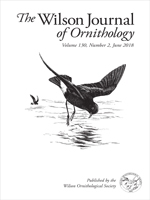Reproductive competition in the form of ovicide is common in some joint-nesting birds, species in which multiple females lay eggs in a single nest. Joint-nesting Smooth-billed Anis (Crotophaga ani) often bury eggs under a new nest floor prior to laying their own eggs. Anis apparently cannot recognize their own eggs, which raises the question of how individuals can minimize their loss of young due to egg burial or consequences of hatching asynchrony. Newly laid eggs are coated with a white layer of vaterite (calcium) while older eggs may be almost entirely blue. Leaving older, bluer eggs in the nest presumably leads to a more competitive nest environment for the female's own young because newer eggs hatch later, producing smaller chicks at risk of getting trampled or bumped out of the nest. We hypothesized that Smooth-billed Anis use egg color as a cue for egg age. We predicted females not yet laying would bury older-looking blue eggs and tested this by removing the vaterite layer from all eggs in selected nests. Contrary to our prediction, altering egg color of whole clutches to make them look bluer, and thus older, did not trigger egg burial. The number of eggs buried increased with increasing female group size, however, consistent with previous work on this species.
How to translate text using browser tools
1 June 2018
Group size, but not manipulated whole-clutch egg color, contributes to ovicide in joint-nesting Smooth-billed Anis
Leanne A. Grieves,
James S. Quinn
ACCESS THE FULL ARTICLE

The Wilson Journal of Ornithology
Vol. 130 • No. 2
June 2018
Vol. 130 • No. 2
June 2018
cooperative breeding
Crotophaga ani
egg coloration
egg manipulation
ovicide
reproductive competition
Smooth-billed Ani




